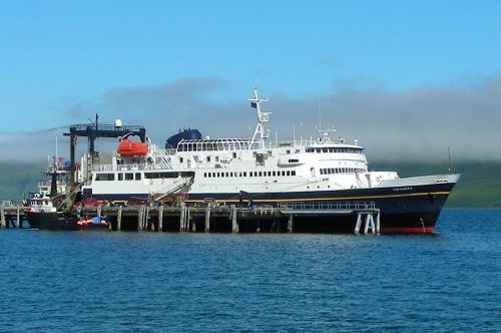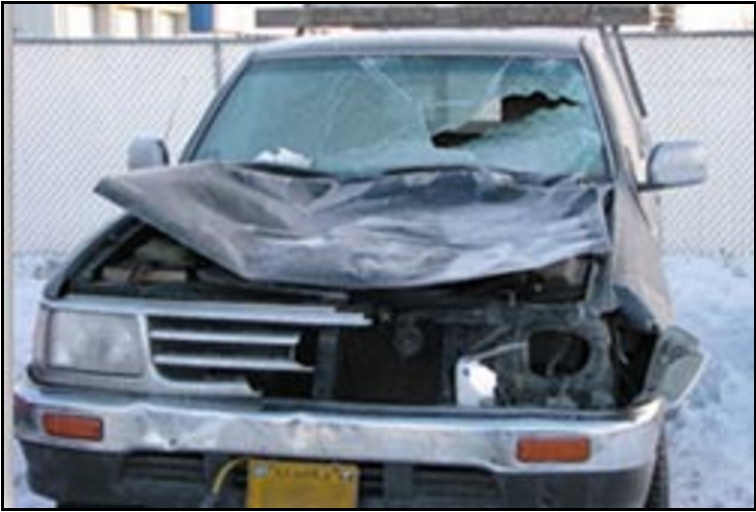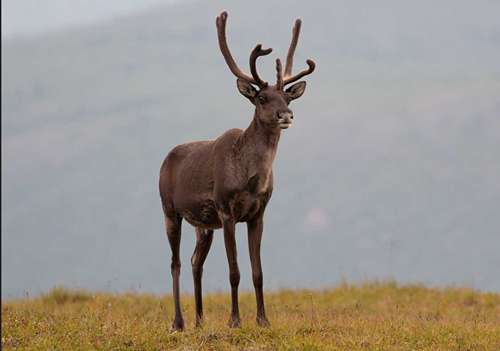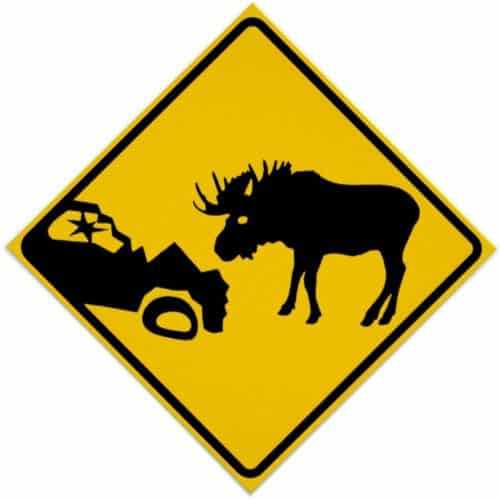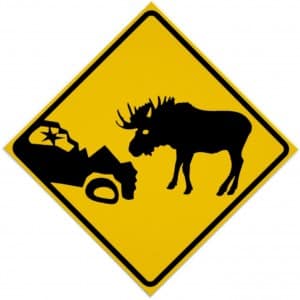 (Anchorage) — Short winter days and a widespread lack of snow for contrast are making moose especially difficult to spot along Alaska roadways, increasing the danger of moose-vehicle collisions.
(Anchorage) — Short winter days and a widespread lack of snow for contrast are making moose especially difficult to spot along Alaska roadways, increasing the danger of moose-vehicle collisions.
“Without snow on the ground, moose are harder to see and people generally drive faster,” says Palmer Area Wildlife Biologist Todd Rinaldi.
Snowy conditions that accompany typical winters also present moose-related hazards. As snowpack accumulates, moose gather in lowlands, often in the vicinity of highway corridors where travel is easier and food sources more exposed.
“The majority of our road kills occur during the winter months,” says Kenai Area Wildlife Biologist Jeff Selinger. “Decreased visibility due to lack of daylight, icy roads, and moose movement patterns all contribute to the increased collision rates we see at this time of year.”
The combination can be deadly for moose and motorists alike. Drivers are sometimes injured and even killed when vehicles traveling at normal highway speeds collide with the animals which may weigh between 500 and 900 pounds.
Mike Coffey, Chief of Statewide Road Maintenance and Operations, is advising motorists to slow down, drive cautiously, particularly during periods of darkness, and drive according to road and weather conditions. Make sure your vehicle is properly equipped for winter driving conditions and that your head and taillights are clean and in good working order.
To help prevent collisions with moose, the Alaska Department of Fish and Game (ADF&G) and the Alaska Department of Transportation and Public Facilities (ADOT&PF) suggest drivers practice the following safe winter driving habits:
- Slow down for conditions. Reduced driving speeds at night and during adverse weather conditions allow motorists better opportunity to spot moose near roadways and provide more time to react should animals bolt into the road.
- Be alert. Deliberately and continuously scan for wildlife on both sides of the road and along road corridors and medians. Drivers preoccupied by cellphone conversations or other distractions are much more apt to collide with moose.
- Stay tuned. Cow moose crossing or standing near roads are often accompanied by calves; reduce speed when moose are spotted and look for additional animals that may be crossing behind the first.
- Observe the Signs. Watch for highway warning signs marking high moose-vehicle collision areas and well-known moose crossing areas such as moose ranges or refuges, and be especially alert for a few miles before and beyond those areas.
- Back Off. Increase the distance between you and the car in front of you to allow for greater braking distances and reaction time.
- Other Clues. Watch for flickering in the headlights of oncoming traffic or against reflective signs or delineators that may be caused by an animal crossing in front of that vehicle.
Motorists involved in or who witness moose-vehicle collisions should call Alaska State Troopers. Injured moose should be reported to the nearest ADF&G office during normal business hours, or to the troopers outside normal business hours.
For more information, see the ADF&G webpage, “Give Moose a Brake” at adfg.alaska.gov/givemooseabrake and the DOT&PF “Winter Driving Tips” webpage at dot.alaska.gov/winter . For updated traveler information call 511, sign up for alerts, or visit 511.alaska.gov .

